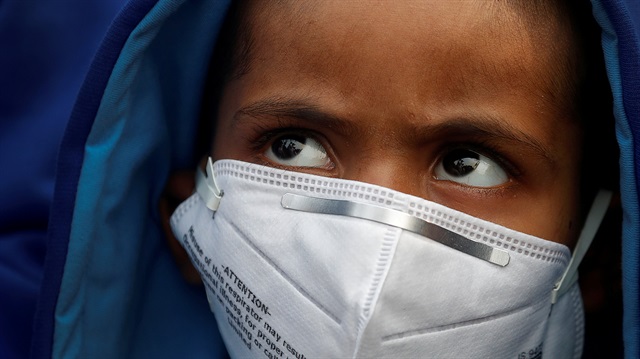
'This was coming'
In an article for the British medical journal The Lancet, experts from more than 100 institutions including the Indian Council of Medical Research and the Institute for Health Metrics and Evaluation at the University of Washington, said that Uttar Pradesh had the second highest disease burden linked directly to air pollution among all Indian states as of 2016. The neighbouring desert state of Rajasthan topped the list.
But, like most other Indian cities, Kanpur does not have the infrastructure to fight air pollution, federal environment ministry officials say.
Only a handful of the country's 100 most polluted cities have action plans to combat air pollution, despite being asked by the federal government to do so in 2015.
In Kanpur, the industrial hub of Uttar Pradesh, particulate matter such as dust and soot accounted for around 76 percent of air pollution during the winter months, according to a 2015 report by the government-run Indian Institute of Technology (IIT) in the city. Biomass burning accounted for around 15 percent and emissions from vehicles about 8 percent in Kanpur, around 475 km (295 miles) southeast of Delhi on India's northern plains.
In summer, particulate matter and vehicles emissions were equal contributors to air pollution, at around 35 percent each.
"The state government does not have the mechanism to understand the sources of air pollution, how will they tackle it?" asked Sachchida Nand Tripathi, a professor in IIT Kanpur, who is working with the federal environment ministry to track particulate matter in real time.
"The state needs to act. This was very much coming."
Big cities such as Kanpur need at least five stations to monitor PM 2.5 polluting the air and take remedial measures, a federal environment ministry official said, declining to be identified.
Chief Pollution officer Misra said Kanpur was taking action.
Misra said the city has just one station to monitor PM 2.5, and only started tracking the metric actively in 2015. His office has asked the state's pollution control headquarters to buy four more such monitors, he said.
He said the local government planned to build new roads and set up an urban train service to cut car pollution. It would also plant more trees and promote battery-operated transport, he said, declining to give any deadlines for the cited actions.
He acknowledged that Kanpur's air exceeded government-set safe limits, based on the concentration of larger pollutants such as PM 10 over the past few years, but added that the city's own data showed pollution in general had not spiked despite higher industrial activity.
In Kanpur, coal burned by industry, emissions from vehicles plying mostly unpaved roads and proliferating tanneries combine to produce a toxic cocktail of airborne pollution.
In one suburban neighbourhood on the banks of the Ganges, a river considered holy by Hindus, sewage and leather scraps flowed into the water, turning it black and slimy. A $3 billion national plan to clean the river is running behind schedule.
Kanpur's lone station tracking PM 2.5 is located in a bustling marketplace in the city's centre.
"We have been asked to track only PM 2.5. I just have one machine to either track PM 2.5 or PM 10," said operator Rajesh Gupta, standing by a jumble of machines and wires, idols of Hindu gods placed nearby. On a terrace above the two-room station, a large display showed live pollution data.
The environment ministry in New Delhi, meanwhile, is considering spending about 7 billion rupees ($104 million) this fiscal year to help cities like Kanpur add more air-quality monitoring systems and buy equipment like water-sprinklers to settle dust.
"It's the shared responsibility of the centre and state governments," said Nandikesh Sivalingam, a campaigner with Greenpeace India. "If a state like Uttar Pradesh demands funds, it's fair because it's facing some big infrastructure challenges."
A senior environment ministry official, who declined to be named citing government policy, said states and municipalities should now budget for air like they do for water.
"The time for free clean air may be over," he said. ($1 = 67.5500 Indian rupees)














